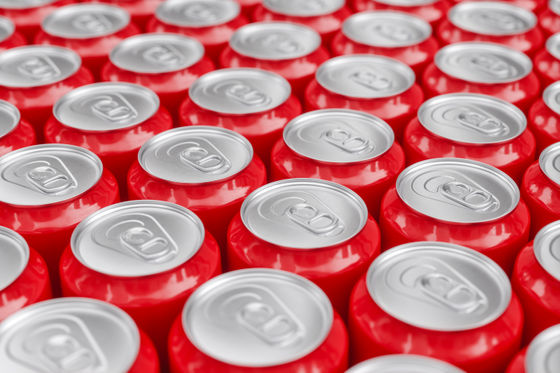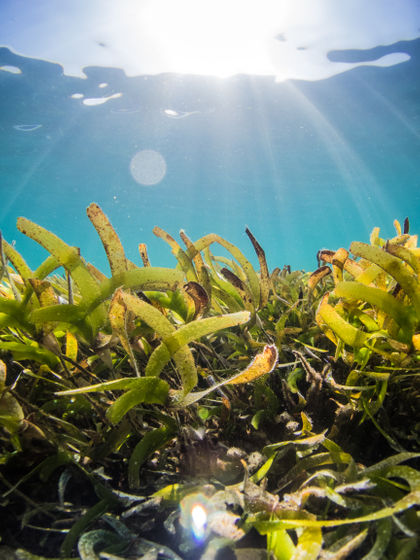It turns out that 32 billion colas worth of 'sugar pile' are sleeping under the seaweed, and the importance of 'blue carbon' increases.

It was found that the soil of the seagrass colony, which can be said to be an oasis of the sea, contains a huge amount of sugar. Normally, when sugar is decomposed by microorganisms in the sea, it is released as carbon dioxide, but because it is suppressed by the action of seagrass, this discovery is the carbon stored by the marine ecosystem. Researchers have pointed out that the so-called
Sugars dominate the seagrass rhizosphere | Nature Ecology & Evolution
https://www.nature.com/articles/s41559-022-01740-z
Sweet spots in the sea: Mountains of sugar under seagrass meadows
https://www.mpi-bremen.de/en/Sweet-spots-in-the-sea.html
Seagrass is one of the most efficient plants on the planet that can absorb carbon dioxide, and the amount of carbon that seagrass can absorb is twice as much as that of terrestrial forests of the same area, and the absorption rate is 35 times faster. It will be. A research team at the Max Planck Institute for Marine Microbiology (MPIMM), who was studying the interaction between nutrients and microorganisms that exude from the roots of seaweed, was studying the so-called root sphere . We have found that it is 80 times higher than previously measured in oceanographic studies.
Regarding this, MPIMM researchers said, 'Calculating based on the sugar concentration found this time, it is estimated that 600,000 to 1.3 million tons of sugar, mainly in the form of sucrose , are present in the roots of seaweeds around the world. That's the equivalent of 32 billion canned colas. '

Seagrass produces sugar by photosynthesis and uses it for its own energy source and growth, but under strong sunlight such as daytime and summer, it can produce more sugar than it can consume or store. .. Therefore, the sugar that cannot be used up is released from the roots. This is believed to be one of the reasons for the large amount of sugar in the rhizosphere.
Energy-rich sugars are a great source of nutrients for microorganisms, so if sugars are present in the soil, they should be quickly broken down by the microorganisms. According to the research team, the sugar in the root zone of seagrass is not consumed by microorganisms because seagrass releases
The question here is the reason why seagrass protects the sugar discarded in the soil from microorganisms until it secretes phenols. According to Maggie Sogin, the lead author of the paper, some microorganisms in the rhizosphere can break down sucrose while breaking down phenols into nitrogen and other nutrients needed by seagrass. That. In other words, it is thought that seagrass stores a large amount of sugar in the soil with phenols in order to coexist with microorganisms that convert excess sugar into beneficial nutrients.

Seagrass stores a large amount of carbon as sugar on the seabed, but it is decreasing at a rate of 7% per year due to changes in the global environment. According to the research team's estimates, if seagrass dies and all the sugar in the rhizosphere is decomposed, at least 1.54 million tons of carbon dioxide will be released into the atmosphere. This is comparable to the amount of carbon dioxide emitted by 330,000 cars a year.
Regarding the results of these studies, Sogin said, 'This study contributes to the understanding of seagrass and reveals how important the conservation of these blue carbon ecosystems is.' Emphasized the importance.
Related Posts:
in Science, Posted by log1l_ks







